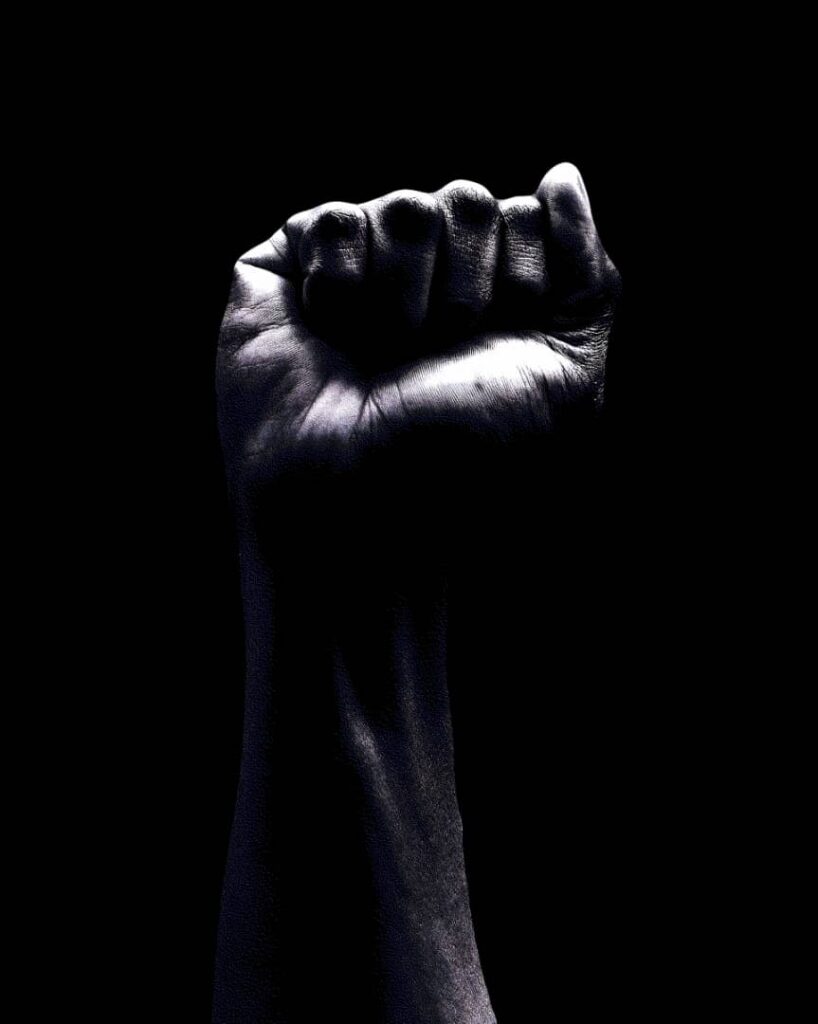Brand activism can improve your organisation’s reputation and offer other benefits. Read to learn the meaning of brand activism and how to approach brand activism campaigns.
What is Brand Activism?
In their book Brand Activism: From Purpose to Action, Philip Kotler and Christian Sarkar defined brand activism as;

“[A series of] business efforts to promote, impede, or direct social, political, economic, and/or environmental reform or stasis with the desire to promote or impede improvements in society.”
A simpler explanation is that brand activism is a type of activism where brands attempt to spur change and solve problems in society.
Brand activism also involves companies taking a stand on a particular issue. Depending on the company’s preferences, the issue might be political, social, economic, or environmental in nature.
Brand activism starts with a company acknowledging a problem and committing to doing something about it.
This may involve raising awareness about the problem, funding efforts to solve the problem, or lobbying the government to implement solutions.
Brand Activism vs CSR
To the untrained eye, brand activism and Corporate Social Responsibility (CSR) are the same. After all, both activities are designed to contribute to societal development and improve company reputation.
But, while brand activism and CSR do benefit society and give the company a better reputation, they are different.
To start with, PR and marketing communications experts consider brand activism an improvement in Corporate Social Responsibility.
For years, CSR has been a gimmick used by companies to show commitment to societal wellbeing and polish their image. In fact, some CSR campaigns are mere products of a company’s desire to achieve good-citizen status.
On the other hand, brand activism stems from a company’s desire to solve problems confronting its buyers.
Through brand activism, brands can show support for social, economic or political causes. By taking a stance on these issues, brands increase awareness and contribute to solving problems.
What are Examples of Brand Activism?
Recently, brand activism has become popular — due to the explosion of social media and the increasing consciousness of younger buyers.
Therefore, it is no wonder that companies, even historically conservative ones, are jumping on the train.
No other year had more brand activism campaigns than in 2020.
In the US, companies including Ben and Jerry’s, Nike, and Reddit showed support for racial equality and ending police brutality after African-American George Floyd died at the hands of a police officer.
In Nigeria, Flutterwave, Cowryvest, Kuda Bank, and other brands supported the youth-driven #EndSARS movement, calling for an end to profiling, harassment, and police brutality in the country.
The sponsored ads promoting social distancing and other safety guidelines at the onset of the COVID-19 pandemic? That was another form of brand activism.
With those messages, companies sought to solve a pressing problem — the spread of COVID-19. And as highlighted earlier, brand activism is an effort to drive remedy societal problems.
Why Is Brand Activism Important?
In the past, companies could get away with staying silent on issues even if it affected their consumers. The primary consideration of companies then was making profits; anything else received minimal attention.
However, modern-day business thinking says that companies shouldn’t take profit-making as their sole raison d’etre. Rather, they must also commit to making the lives of their customers better.
It isn’t enough to sell products and services to consumers. A company must be dedicated to impacting (positively) on issues confronting these consumers.
Social media has increased awareness of problems in society, and buyers are increasingly showing a preference for brands committed to solving these problems.
For example, a Millennial-aged Nigerian may be drawn towards a brand that shows commitment to ending police brutality — because the brand is solving a problem that likely affects him.
Nowadays, companies are expected to “stand up for the right thing” — as an Edelman study put it.
While trying to improve the bottom line, businesses must strive to make life better for those buying their products and services. This is the core of every brand activism effort.
How Does Brand Activism Work?
Like CSR, brand activism campaigns can vary according to the company’s values and beliefs.
A company might create an advertising campaign to spur awareness around an issue and call for solutions. American sportswear giant, Nike, is a good example.
In 2018, Nike aired an ad featuring Colin Kapernick — an African-American football player blacklisted from the NFL for kneeling during the US anthem to protest racism and police brutality.
For years, Nike has marketed itself as a supporter of racial equality. So, an ad featuring a prominent Black rights activist only helped bolster awareness of its commitment to ending racism in the US.
Brand activism campaigns can also be done on social media. In fact, social media is one of the most effective (and affordable) platforms for brand activism.
Companies can share messages and materials on their social media pages showing support for social causes or taking a stand on an issue. Brand activism on social media was particularly popular in 2020.
American brands posted black squares and Black Power fists on their social media channels to signal support for BLM protests and calls for racial equality.
Equally, Nigerian companies released messages and materials on social media showing solidarity with #EndSARS protesters as they demanded the eradication of unlawful arrest and detention of individuals.
Funding efforts towards finding solutions to a particular problem is another form of brand activism. By donating, organisations ‘walk the talk’ and show their commitment to change.
A good example is a decision by Flutterwave, a payments provider, to fund protests against police brutality in Nigeria. Also, within this category is a donation of funds by companies to support the government’s fight against COVID-19 in Nigeria.
READ ALSO: Book launch: Why everybody needs public relations
Is Brand Activism Necessary?
Without a doubt, brand activism is beneficial for companies. It can help enhance the organisational reputation; when brands participate in problem-solving, public sentiment around their activities will grow positive.
Brand activism helps increase awareness and publicity around the company. Exceptional brand activist efforts can enjoy considerable coverage from news agencies, blogs, social media influencers, and so on — for free!
Brand activism can even increase profits by promoting greater sales and patronage from consumers. From research, customers tend to patronise purpose-driven companies that also share their values.
Even so, brand activism has its own downsides — the biggest of them being the risk of sounding ‘fake’. In other words, consumers may view a company’s support for social causes as a form of ‘performance activism’.
Performance activism refers to a false show of support for a cause, designed to improve the image of an individual or group.
During the #EndSARS protests and the BLM protests, it was obvious that some companies only wanted to cash in on the publicity and had zero interest in the cause. Although some got away with it, others got called out and faced heavy backlash.
Companies risk being called performance activists if their messages are inauthentic. But that’s the least problem to worry about.
Brand activism can actually alienate some customers and reduce sales. That is quite possible if it takes a stand on controversial and polarising issues.
For example, after Nike aired its Kapernick ad, many customers destroyed their Nike-branded products in protest.
In another case, Gillette lost billions of dollars after an ad condemning “toxic masculinity” among men led to heavy backlash. This is, perhaps, one of the best examples of brand activism gone wrong.
Even with its pros and cons, is brand activism necessary for Nigerian companies? Yes!
Believe it or not, but brand activism is inevitable in the 21st century. Any organisation that avoids speaking out that issues that affect its consumers will be accused of selfishness and lose customers.
Such organisations will also miss out on the various benefits of good brand activism. In all honesty, brand activism provides too much value to ignore it.
Brand activism is great — when executed properly. This is why the concluding part of this article deals with the best way to approach brand activism.
How Should Organisations Approach Brand Activism?
Before launching brand activism campaigns, companies have to spend time on planning different aspects of the campaign. A small error might ruin the entire project so proper planning is important.
Here are some must-dos for organisations embracing brand activism:
Examine company values
Not every social cause will align with your company’s values. For example, a multinational oil company notorious for oil spilling cannot claim to be involved in environmental activism.
The company in the above scenario would come off as hypocritical since its activities clearly don’t reflect a value for preserving the environment.
Before embracing brand activism, the Communications Director must analyse the company’s values and ensure that the causes it supports (visibly) reflect its values. This will make the brand message more authentic and keep claims of corporate hypocrisy at bay.
Start small
For companies that have always resisted making statements on issues, going all on brand activism may seem tempting. However, it is better to start small and, thereafter, expand.
It is advisable to pick a cause that feels easy to support and start from there. Then, depending on the success of brand activism, the organisation can expand to more important problems.
Research
Researching is very important while planning a brand activism campaign. Researching helps to avoid making costly mistakes that can affect the reception of messages.
Research goes beyond a Google search or sending a short questionnaire. You have to get a deeper context and accurate information about the cause.
How is this possible? The Communications Director can meet with your employees and ask for their input. That helps craft messages that are accurate, easy to understand and authentic.
Create a long-term plan
Brand activism is more than sending out a solidarity tweet or airing an ad to spread awareness. You must be committed to solving the issue no matter how long it takes.
That involves creating a long term gameplan to guide brand activist efforts. For example, a company might follow up with social media solidarity messages with donations in support of the cause.
Companies that exhibit a long-term commitment to making society better inspire more loyalty and trust in buyers. Sales increases and the bottom line improves significantly.
Understand the legal implications
In a country like Nigeria, companies always strive hard to abide by government rules. However, support for a social cause can bring an organisation into conflict with the government, as we saw during #EndSARS.
According to reports, Flutterwave was forced to revoke the donation link it created to fund the #EndSARS protests after the Central Bank of Nigeria accused it of “funding terrorism“.
In a similar fashion, some other companies that openly supported the protests suffered government-imposed sanctions. Hence, businesses must evaluate the risk of conflict with political players before showing support for a cause.
Conclusion
Despite its downsides, brand activism remains the best way for a brand to carve out a reputation for itself and drive societal change.
Brand activism helps improve goodwill and can also promote better customer loyalty. However, your organisation can only reap the benefits when done right.
The various tips offered in this article will help your organisation handle brand activism properly. Follow them and you can be sure to mount brand activist efforts that receive positive approval and widespread coverage.
Emmanuel Awosika is a freelance content writer and journalist. He studies Mass Communication at the University of Lagos, with a focus on Corporate Communications.
He writes on social issues, corporate comms, and branding. Read his writing on Medium https://medium.com/@siremanny82


This is nice👍